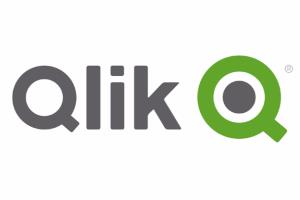The discussions on the future of healthcare are on fire. Health Care should be cheaper, better and more transparent. Meanwhile, the emergence of new technologies provides countless opportunities to meet the challenges in the sector. New developments such as sensors, 3D printing, apps and robots follow each other in rapid succession. The beauty of all these new technologies is that they generate a wealth of data. Big data and analytics in the healthcare sector is therefore of great importance, and now we have reached the point that insights into data, can save lives.
From the boardroom to business
Data analysis in healthcare is not necessarily new. Hospitals havealready been analysing data for several years to improve theirbusiness operations. This includes financial data, operational dataand clinical data. By connecting andgaining insights from this data, healthcare institutions can ensure that they have enough staffs on the groundand that they always have enough drugs in stock. Data analysis is therefore focused mainly on management level. For example, in India, Wockhardt Hospitals uses Qlik’s data discovery solution to gain better data insights and improve business performance while reducing operational costs.The data for the project came from disparate sources such as an existing Hospital Information System (HIS), an SAP financial module and a huge volume of excel spreadsheets. Subsequently, the output was used to generate strategic insights and analysis for the management, to evaluate revenue analysis and cost optimisation measures, MIS for the finance team, pricing analysis and cost audits for related finance functions.
At a more holistic level, there is still a huge profit to gain by also allowing the healthcare professionals and patients to get started with data analysis. This will give them instant insights into their treatment efficiencies andthe costs of a certain treatment. On the other hand,aspects such aspatient satisfaction and productivity can be visually displayed directly. Ultimately, this enables healthcare professionals to determine the best treatment at a patient level, reducing waiting times at the emergency room whilesaving costs.
The healthcare system in India is complex. Investments in healthcare is still inadequate for a country such as India. Technology can aid healthcare providers to deliver more affordable healthcare. Data generated in the healthcare sector is growing at an exponential scale and it is imperative that healthcare organisations implement a business intelligence system that can leverage this data, is user-centric and provides the ability to provide quick access, analysis and dissemination of information. Data analytics can enable healthcare organisations to deliver better patient care while driving optimal operational efficiencies and growth.
A good example of how data analysis can improve health care would be Noord-Holland Noord (NHN) Safety Region. Along with the cardiologists of the MCA (Medisch Centrum Alkmaar) and AMC (Academisch Medisch Centrum), the ambulance service of the NHN Safety Regionwas in search for a solution to shorten the time between the reporting of a heart attack at the emergency room and the angioplasty in the hospital.
The goal is to achieve a lower mortality in heart attacks and a better quality of life after a heart attack. To accomplishthe objective,NHN Safety Regionhas developed a dashboard that visualises every single step of the process in the emergency room, the ambulance and the hospital. This provides insight. By analysing this, several improvements can be made in the process, aimed at a faster turnaround on emergency care. It sometimes happens that a patient is brought to a more distant hospital, as the operating room there is available more quickly. Ultimately, NHN was able to reduce the total time of the call up to operation with 20 minutes (national standard: 120 minutes). In an acute care chain in which every second counts, thisis phenomenal and life defining, and of great social importance.
Predict Complications
The Sahlgrenska University Hospital in Sweden, one of the largest hospitals in northern Europe, is another interesting example. The hospital has more than 2,700 beds and approximately 17,000 employees. The hospital had three wishes:
1. Identify the best treatment for severe head injuries and provide physicians with a tool that they could better predict complications during surgery.
2. Provide faster access for medical professionals to critical information in case of emergency craniofacial surgery.
3. Gain insight in patient data. The problem is that this data is stored in various databases, or in the hospital itself, or to other physicians or health care facilities. A 360-degree view of the patient was almost impossible.
To fulfill these wishes,the hospital started working with data analysis. The results were above expectations. The complications in craniofacial surgery were reduced to zero. This will save the hospital 750,000 euro a year in resources and a further 1 million annually on unnecessary tests. By analysing many surgeries, doctors are now able to predict whether and which complications will start to occur. By means of data-analysis, it was also clear that the longer a patient is in the hospital after the surgery, the greater the risk of postoperative complications. The hospital therefore decided to shorten the duration of the stay, making more beds became available and costs were reduced.
Data as a lifesaver
The first truly compelling examples of data as a lifesavers have now seen the light. As the healthcare industry increasingly deploys new technology, there is also more data at our disposal. Data analysis therefore will play an enormously important role and new initiatives will follow soon. The main challenge is to collect all data that is usually stored in different systems from different parties. This makes it sometimes difficult to (quickly) to gain insight into certain data or to make connections. With the right knowledge and business intelligence software, this is possible. Ultimately,this leads to a situation where everyone can take smart decisions on a daily basis. This can be a nurse or a board member of a major healthcare facility. The benefits range from a decrease in the number of readmissions, shorter waiting times, reduced length of stay, better treatment outcomes, increased safety to lower costs of care. Do you already have plans to use data to save lives?






















